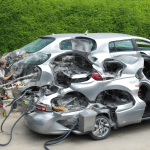In the high-speed, adrenaline-fueled world of motor racing, the possibility of danger is ever-present. But it’s not just about the thrill; safety is of utmost importance. Advancements in technology have become an instrumental part of making the sport safer for drivers and spectators alike. But how exactly can technology enhance safety measures in motor racing? Let’s buckle up and take a detailed look.
Harnessing the Power of Data Analysis
Data analysis is no longer confined to the realms of business and finance; it has permeated into motor racing too. The use of data analysis in motor sports can help identify potential safety risks and implement necessary safety measures.
Cela peut vous intéresser : What’s the Future of Sports in Virtual and Augmented Reality?
Teams across different motor racing championships use data analysis to understand every nuance of their cars and drivers’ performance. They analyze the data from sensors fitted in cars, which measures speed, tire pressure, brake temperature, fuel consumption, and more. By examining this data, teams can predict potential breakdowns or malfunctions that might pose a risk to the driver’s safety.
Moreover, data analysis also helps in designing and implementing safety protocols for different racing conditions. For instance, the data from previous races can provide insights into how cars respond to various weather conditions, which can help in making informed decisions about race strategy and safety measures.
A lire en complément : What’s the Best Method for Incorporating Natural Light in a Dark Kitchen?
The Role of Virtual Reality in Driver Training
Virtual reality (VR) technology has taken the world by storm, and motor racing is no exception. VR has revolutionized driver training, making it safer, more efficient, and more realistic.
Using VR, drivers can practice on virtual replicas of real tracks, experiencing the same turns, elevations, and even the same weather conditions they would face in a real race. This allows them to familiarize themselves with the track without the risk of an actual crash. Furthermore, VR can simulate dangerous scenarios that a driver might encounter during a race, preparing them to respond appropriately and safely.
Additionally, VR is instrumental in testing new safety features. For example, engineers can use VR to simulate the impact of a crash, assessing how the car and the safety features would perform. This information is invaluable in improving safety measures before the car even hits the track.
Advancements in Vehicle Design and Materials
The evolution of technology has greatly influenced the design and materials used in racing cars. Today, the emphasis is on making cars lighter yet stronger, and more resistant to impacts.
Materials like carbon fiber and kevlar are used in the construction of racing cars due to their high strength-to-weight ratio. These materials can withstand high impacts, thereby protecting the driver in the event of a crash.
Similarly, the design of the car is continuously evolving to enhance driver safety. For instance, the incorporation of roll cages, designed to protect the driver in case of a rollover, has become a standard feature in racing cars.
Furthermore, advanced technologies like energy-absorbing foams and impact-absorbing barriers are used to minimize the impact of a crash. These measures go a long way in protecting the driver and reducing the risk of serious injuries.
The Impact of Autonomous Vehicles on Motor Racing Safety
As autonomous vehicles become a reality, their potential impact on motor racing safety cannot be underestimated. With their ability to make quick decisions based on data from their surroundings, autonomous vehicles could significantly reduce the risk of accidents in motor racing.
These vehicles use sensors and advanced algorithms to detect and avoid potential hazards, reducing the risk of crashes. Additionally, in the event of unavoidable accidents, autonomous vehicles can control the crash in a way that minimizes the impact, potentially saving lives.
While the idea of driverless cars in motor racing might still be in its infancy, tests and trials are underway. In the future, we could see autonomous vehicles becoming a common sight in motor racing, contributing significantly to driver safety.
Digital Twins and Their Role in Improving Safety Measures
A recent advancement in technology that is making waves in motor racing safety is the concept of digital twins. A digital twin is a virtual replica of a physical object or system, allowing engineers to simulate and analyze its performance under various conditions.
In the context of motor racing, teams can create digital twins of their cars, enabling them to analyze their performance and safety features in a controlled virtual environment. This approach allows them to identify potential issues and make necessary modifications, ensuring optimal safety levels before the car hits the track.
Moreover, digital twins can help in developing personalized safety measures for each driver. By analyzing the driver’s behavior and responses, teams can design safety features that cater specifically to the driver’s style and preferences, enhancing their safety during races.
The use of digital twins is still relatively new in motor racing, but it holds immense potential for improving safety measures. As the technology matures and becomes more widespread, its impact on motor racing safety could be transformative.
The Utilization of Wearable Technology in Motor Racing Safety
Another significant innovation in the motor racing industry is the use of wearable technology. These devices are small, portable tech gadgets worn on the body. They have been instrumental in enhancing the safety measures in motor racing.
Wearable technology can monitor the driver’s vital signs, such as heart rate, pulse, and body temperature, during races. This real-time health data can alert teams to any medical emergencies that may arise, ensuring prompt response to potential health risks.
Moreover, some wearables are capable of measuring the g-force experienced by the drivers during a race. This data is particularly useful in understanding the impact and strain the drivers’ bodies are under, which can be crucial in tailoring their training programs and recovery plans.
Wearable technology can also provide valuable data on driver fatigue levels, a common cause of accidents in motor racing. By monitoring the driver’s sleep patterns and alertness levels, teams can implement measures to manage fatigue more effectively, further enhancing safety.
While wearable technology is still evolving, it is evident that its impact on motor racing safety is significant. As the technology continues to improve, it could become an indispensable tool in ensuring driver safety in motor racing.
Conclusion: The Indispensable Role of Technology in Motor Racing Safety
In conclusion, technology has become an indispensable tool in enhancing safety measures in motor racing. The use of advanced technologies, such as data analysis, virtual reality, autonomous vehicles, digital twins, and wearable technology, has revolutionized how safety measures are implemented in the sport.
These technological advancements have not only made the sport safer for the drivers but have also contributed to making the races more thrilling and engaging for the spectators. They have ensured that motor racing can continue to be a high-speed, adrenaline-fueled sport while minimizing the risks associated with it.
It’s evident that the future of motor racing safety lies in harnessing the power of technology. As we look ahead, we can expect even more innovative technologies to emerge, further enhancing safety measures and revolutionizing the sport of motor racing. Regardless of what the future holds, one thing is certain: technology will continue to play a pivotal role in ensuring the safety of motor racing.





